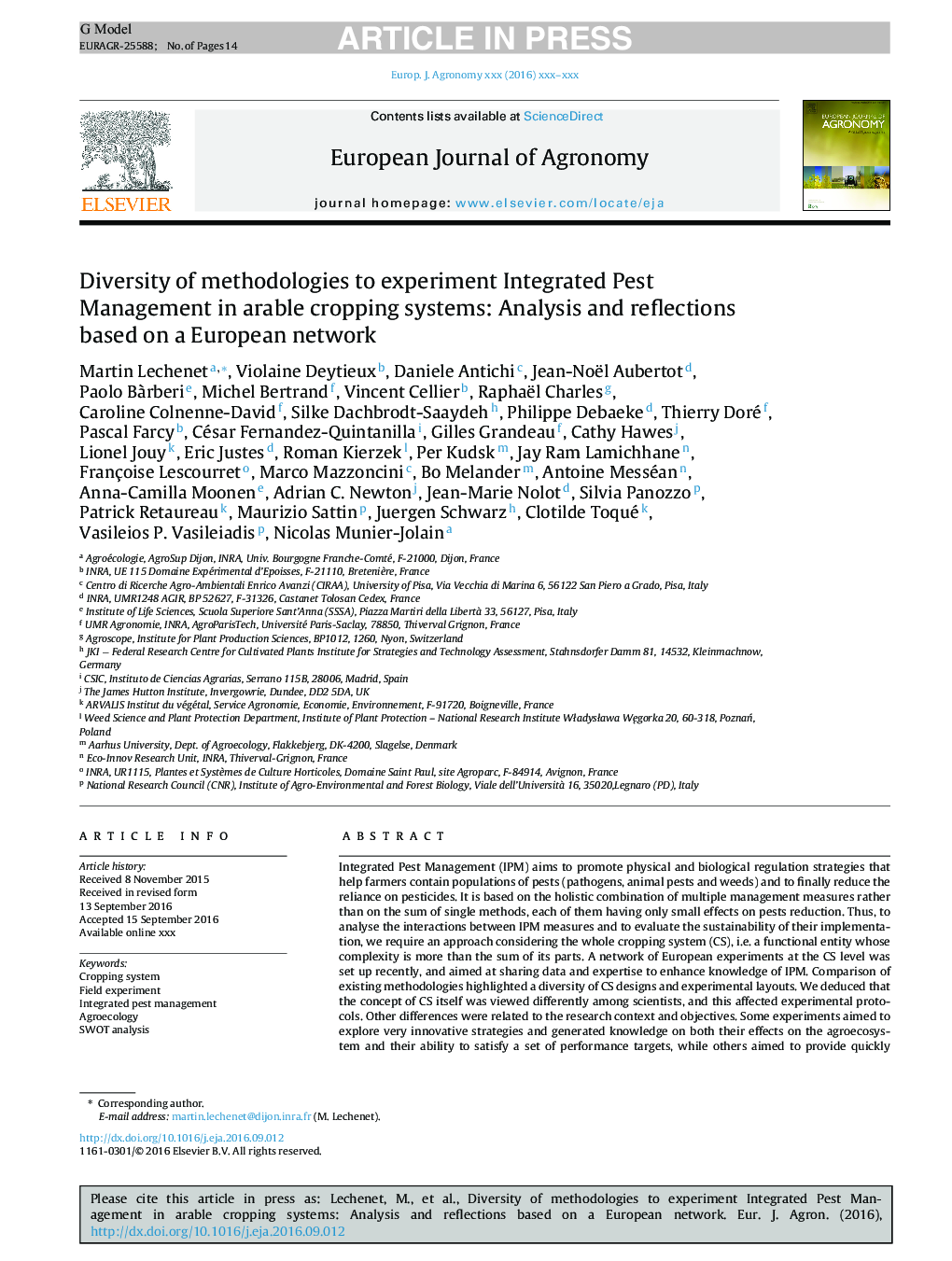| کد مقاله | کد نشریه | سال انتشار | مقاله انگلیسی | نسخه تمام متن |
|---|---|---|---|---|
| 5761238 | 1624441 | 2017 | 14 صفحه PDF | دانلود رایگان |
عنوان انگلیسی مقاله ISI
Diversity of methodologies to experiment Integrated Pest Management in arable cropping systems: Analysis and reflections based on a European network
ترجمه فارسی عنوان
تنوع روش ها برای آزمایش اداره آفات یکپارچه در سیستم های کشت کاذب: تجزیه و تحلیل و بازتاب ها بر اساس یک شبکه اروپایی
دانلود مقاله + سفارش ترجمه
دانلود مقاله ISI انگلیسی
رایگان برای ایرانیان
کلمات کلیدی
موضوعات مرتبط
علوم زیستی و بیوفناوری
علوم کشاورزی و بیولوژیک
علوم زراعت و اصلاح نباتات
چکیده انگلیسی
Integrated Pest Management (IPM) aims to promote physical and biological regulation strategies that help farmers contain populations of pests (pathogens, animal pests and weeds) and to finally reduce the reliance on pesticides. It is based on the holistic combination of multiple management measures rather than on the sum of single methods, each of them having only small effects on pests reduction. Thus, to analyse the interactions between IPM measures and to evaluate the sustainability of their implementation, we require an approach considering the whole cropping system (CS), i.e. a functional entity whose complexity is more than the sum of its parts. A network of European experiments at the CS level was set up recently, and aimed at sharing data and expertise to enhance knowledge of IPM. Comparison of existing methodologies highlighted a diversity of CS designs and experimental layouts. We deduced that the concept of CS itself was viewed differently among scientists, and this affected experimental protocols. Other differences were related to the research context and objectives. Some experiments aimed to explore very innovative strategies and generated knowledge on both their effects on the agroecosystem and their ability to satisfy a set of performance targets, while others aimed to provide quickly adoptable solutions for local farmers in line with the current socio-economic constraints. In some research programmes, the experiment was part of the CS design process - and tested CS were regularly revised based on an continuous improvement loop - while in other cases CS were kept stable across years so as to enable the evaluation of their long-term cumulative effects. A critical aspect contributing to the diversity among CS experiments was the distinction between a factorial design of experimental CS and systemic approaches: factorial experiments allowed quantification of the effects of each IPM component regardless of the consistency between components defining the CS. In contrast, systemic approaches focused on the overall evaluation of CS designed with consideration of their consistency, hence maximising their ability to meet the objectives. Because CS experiments represent a huge investment in terms of economics and time, preliminary reflections of the relevance of the experimental strategy is of critical importance.
ناشر
Database: Elsevier - ScienceDirect (ساینس دایرکت)
Journal: European Journal of Agronomy - Volume 83, February 2017, Pages 86-99
Journal: European Journal of Agronomy - Volume 83, February 2017, Pages 86-99
نویسندگان
Martin Lechenet, Violaine Deytieux, Daniele Antichi, Jean-Noël Aubertot, Paolo BÃ rberi, Michel Bertrand, Vincent Cellier, Raphaël Charles, Caroline Colnenne-David, Silke Dachbrodt-Saaydeh, Philippe Debaeke, Thierry Doré, Pascal Farcy,
